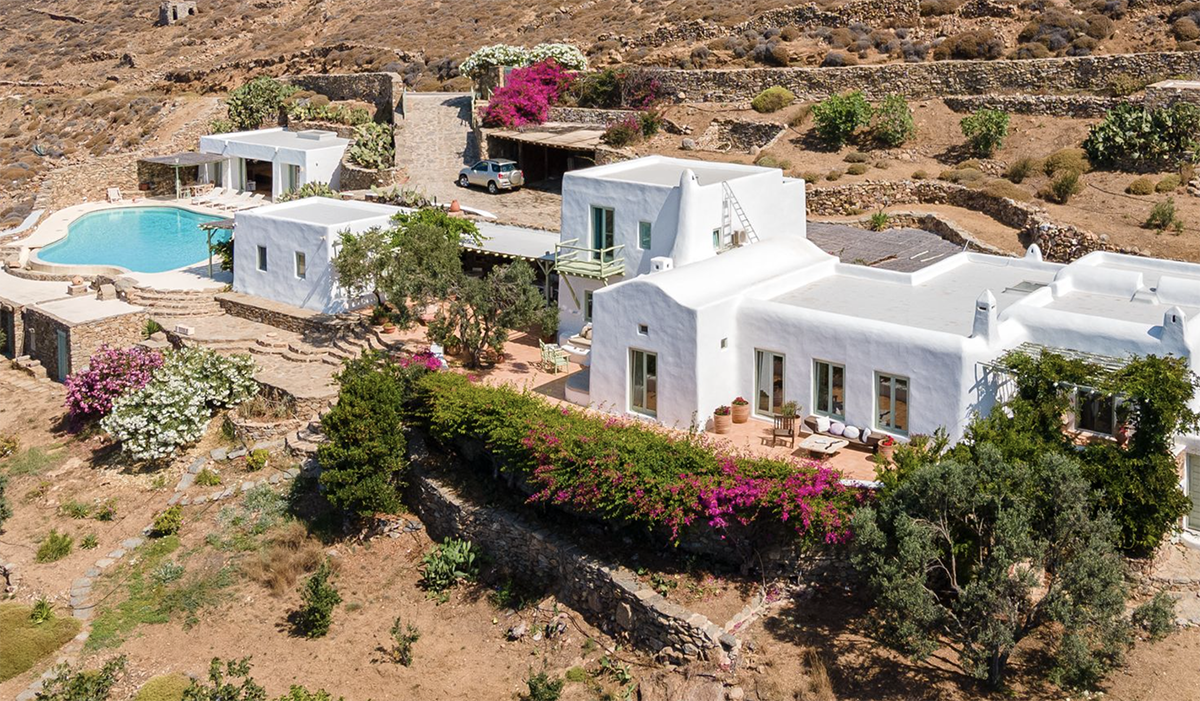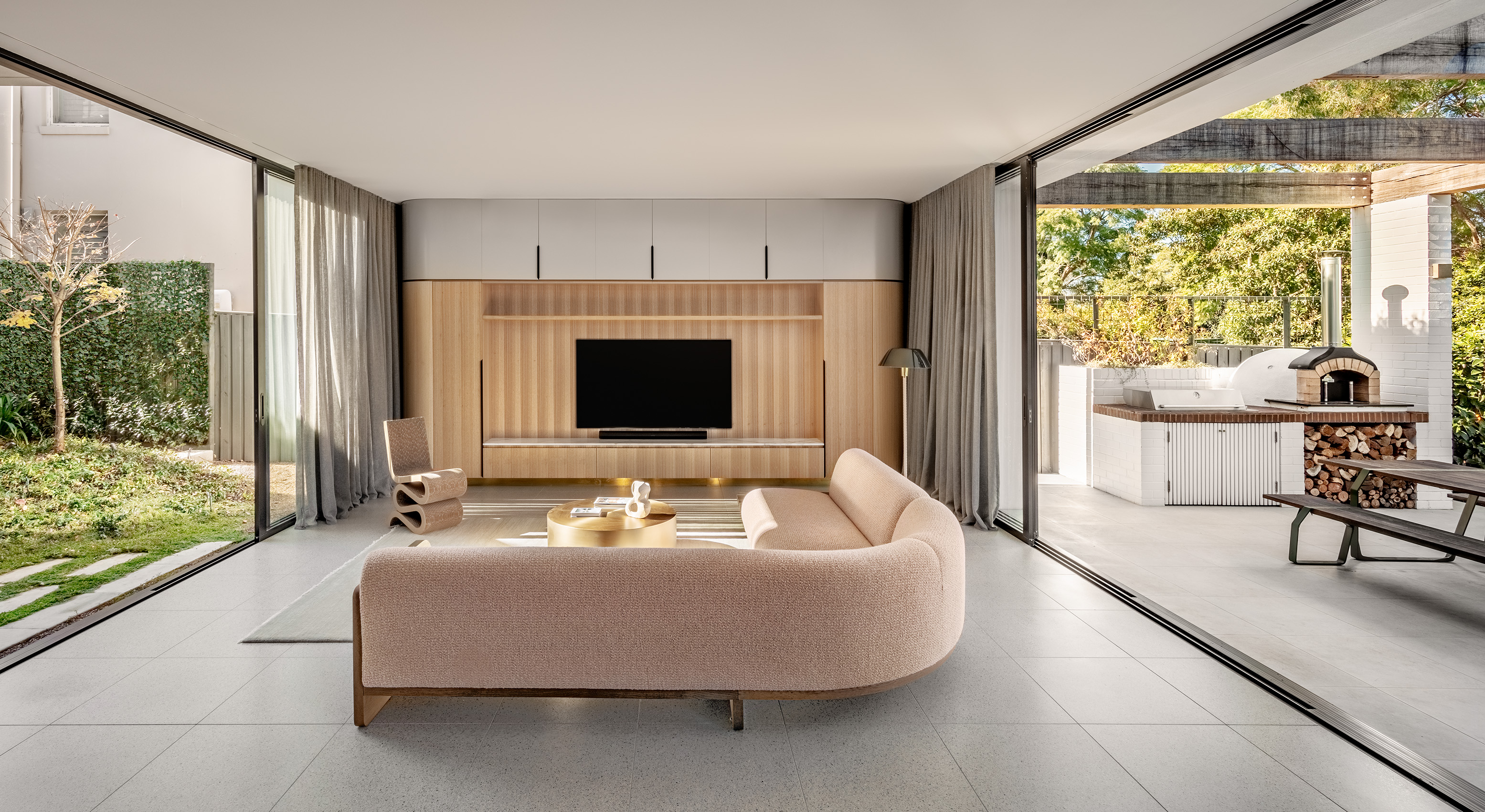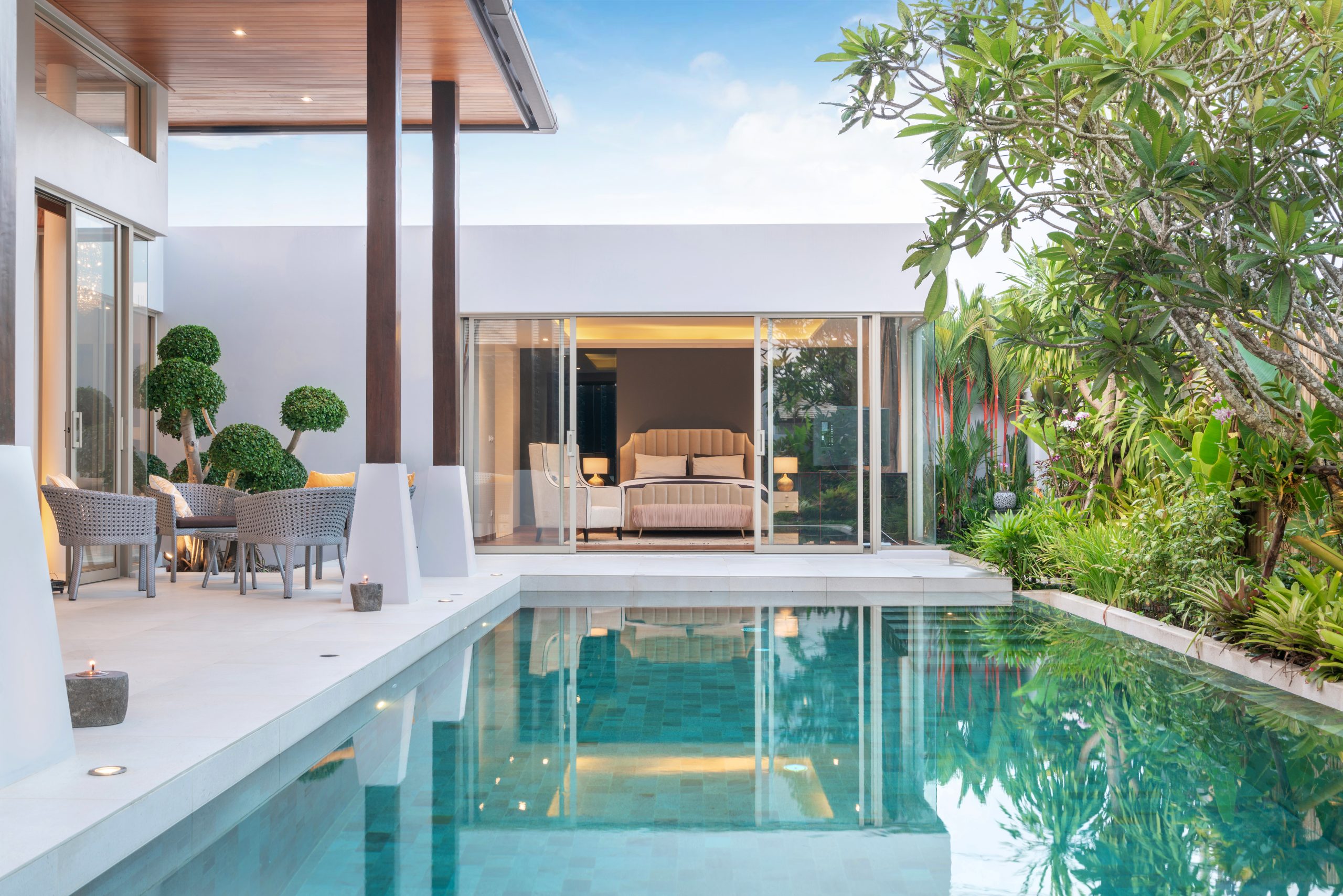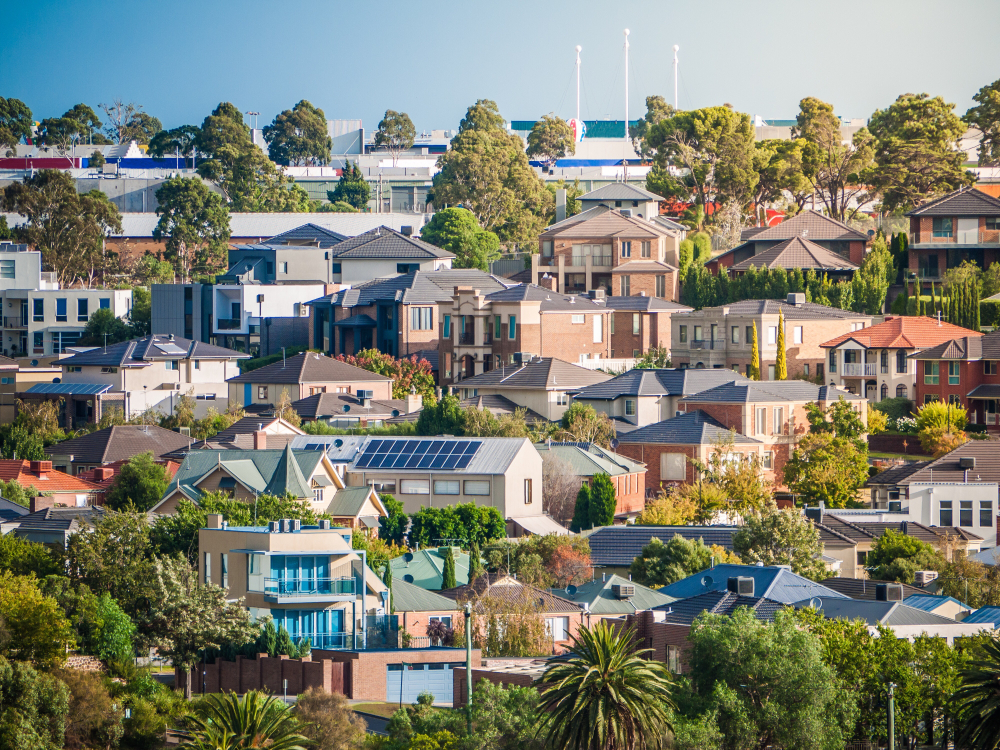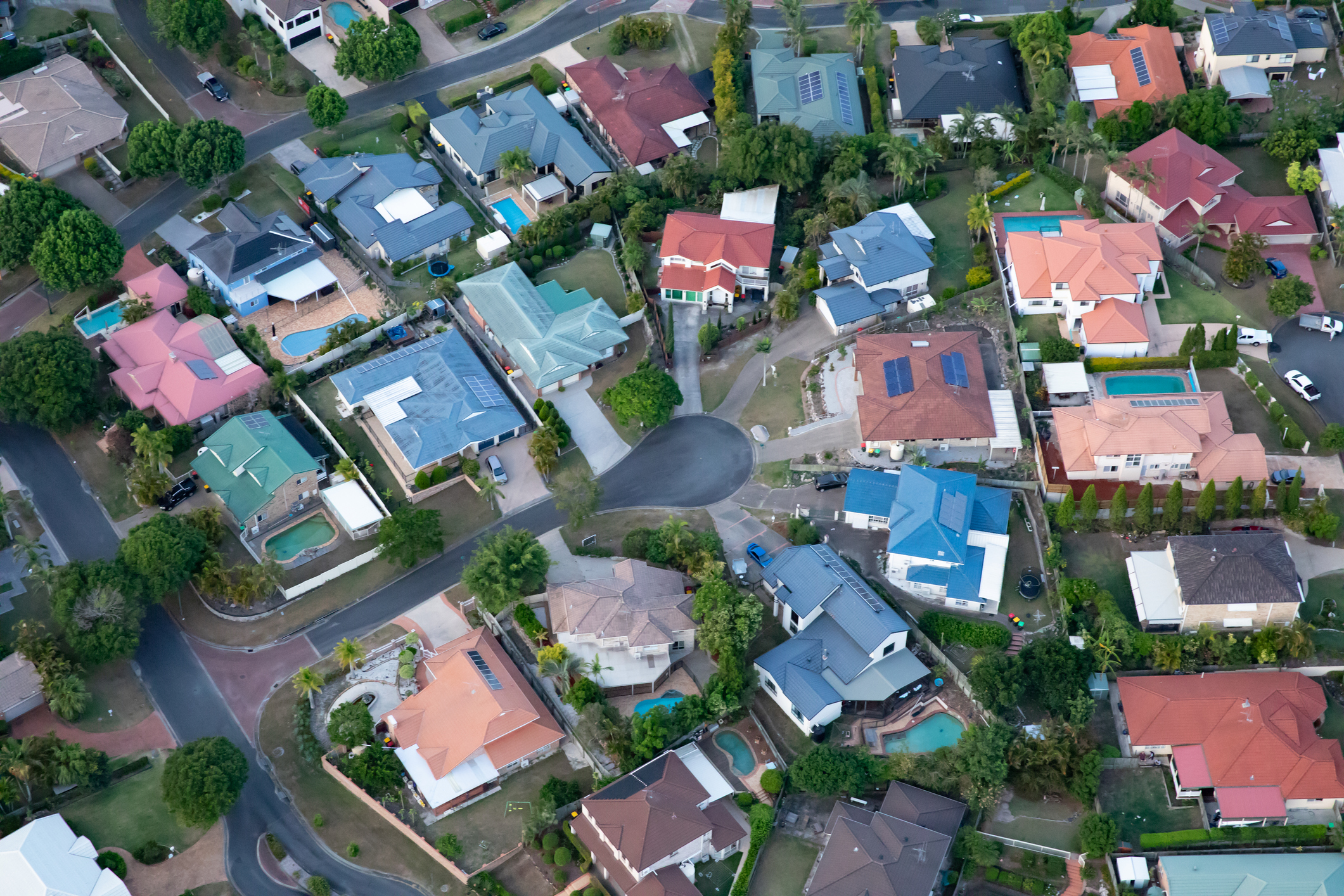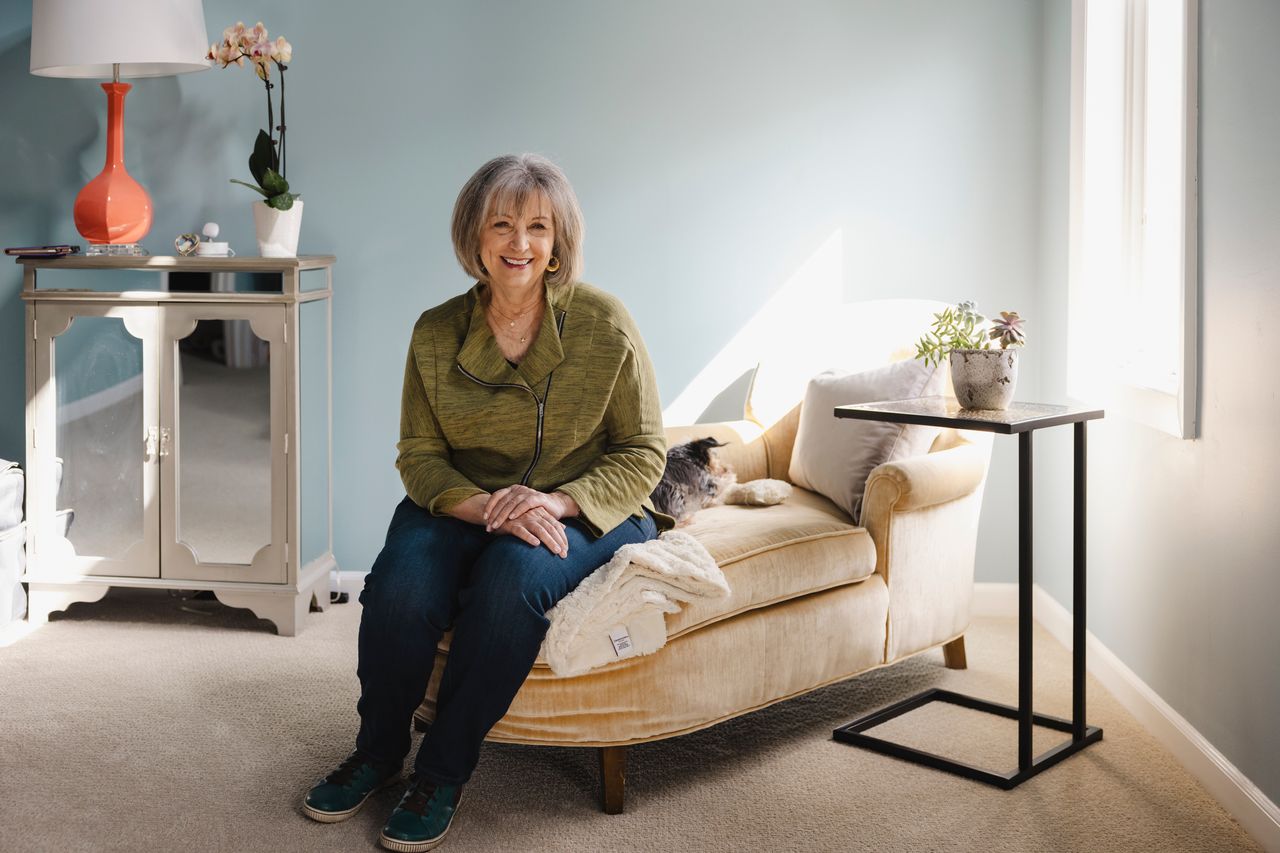American Buyers Set Their Sights on Europe
Second-home markets in Europe have seen an uptick in interest from Americans.
Kathryn Gamble, a Chicago veterinarian, and her husband, Texas orchestra conductor Robert Carter Austin, have been frequent visitors to Venice for more than two decades, staying in hotels or short-term rentals. They were ready to buy a home there in 2020, but Covid-19 intervened.
Now, as trans-Atlantic travel for Americans tentatively resumes, they are restarting their search.
During the couple’s most recent Venetian sojourn in 2018, they rented a palazzo on the Grand Canal, recalls Dr. Gamble. They hosted friends and family, and flew a Texas flag from the balcony. Looking ahead to ownership, they hope to recapture some of that atmosphere.
“We need to be on the water,” says the 54-year-old. “And we need to have three or four bedrooms. It’s Venice, and people will come to visit.”
Dr. Gamble and her husband, 75, recently made inquiries about a nine-bedroom, 17th-century Grand Canal palazzo listed for $11.2 million, according to Knight Frank, which is handling the sale. On the other side of the canal, a six-bedroom, 3,800-square-foot apartment in an early-20th-century building is listed for $2.7 million.
From Lisbon to the Greek islands, the Americans are back, ready to take advantage of the buyer’s market in many of Europe’s leading resort areas. There are bargains to be had at the entry and mid-levels, with prices buoyant at the top end.
In mid-June, the European Union reopened nonessential travel from the U.S., prompting a jump in property inquires, says Mark Knight, a London-based partner and head of international residential sales at the U.K.’s Knight Frank. He says the latest wave of house-hunters are especially interested in vacation homes in Italy and France, and he also has seen more calls about Lisbon. At Savills, another U.K. real-estate company, inquiries from Americans have doubled compared with this time last year, says Hugo Thistlethwayte, head of global residential operations.
Knight Frank last week released its Global Residential Cities Index for the first quarter of 2021, giving a view of price changes from the year-earlier period, when lockdowns began to take hold worldwide. It shows double-digit increases clustered in the Nordic countries and Eastern Europe, while prime European second-home destinations that had been inching toward the top in previous years—including Lisbon and Malaga on Spain’s Costa del Sol—are seeing declines.
In Venice, real-estate prices are down by 4.3% over the past year, Knight Frank shows. “It’s not like it was before,” says Giovanni Rubin de Cervin Albrizzi, a local architect. “But recently, there have been lots of French and Germans, and the Americans are starting to come just now.”
Mr. Rubin, who specializes in renovations of historic properties, says the pandemic changed his business. Instead of full-scale renovations of second homes, he is doing more partial projects on long-term rentals, where such work is done by renters in exchange for discounts.
Jeffrey Alexopulos, another Texan, is looking in Marbella. Overall prices in the Spanish coastal resort fell 10.3% from spring 2020 to 2021, says Andrea de la Hoz, senior analyst at Tinsa, a Spanish real-estate consultancy. Mr. Alexopulos says his interest was piqued by a three-bedroom Marbella apartment listed at $515,000, down from the $770,000 the owner had paid a few years ago. He attributes the fall to the drop in vacation rentals.
At the luxury end, however, purchases have surged to a level not seen before, says Christopher Clover of Panorama Properties.
He currently is selling a five bedroom, 13,364-square-foot villa in La Zagaleta, a gated Marbella-area mountain development, for $19.9 million. Earlier, a 33,500-square-foot villa on 3.4 acres in the same development, listed for $37.9 million, sold after two years on the market.
Americans, known for favoring traditional properties, are now are in line in Marbella with international preferences toward new construction, says Mr. Clover.
Mr. Alexopulos, 68, and his wife, Janet Ferrari, 55, who co-own backyard-game manufacturer Free Donkey Sports, say they see Europe as offering a better return on a second home for themselves and their London-based son. “The prices in the U.S. are crazy right now,” says Mr. Alexopulos. They recently sold an Orlando, Fla., property they owned.
Americans typically play a niche role in Southern Europe’s luxury second-home markets, which tend to be dominated by sun-hungry Northern Europeans. But they have traditionally made themselves more conspicuous at the very top of those markets.
A Knight Frank study on French markets shows Riviera prices are static at 1% increase during 2020, but they still are the country’s highest. Saint-Jean-Cap-Ferrat, a tiny peninsula near Nice, has the country’s most expensive real estate at $3,855 a square foot.
In search of quieter or more authentic options, American looking in the area seem most interested in the so-called backcountry listings, such as a six-bedroom stone farmhouse, dating to the 18th century, a 40-minute drive from Antibes. The 2.2-acre property has an asking price of $7.4 million.
Americans should expect evolving rules for travel and viewings across Europe. Mr. Alexopulos says he and his wife—both fully vaccinated—are preparing for their trip by monitoring U.S. State Department information on Spain, as well as the Spanish health website. They also stay in touch with their airline.
In Lisbon, now a major tourist destination and second-home market, prices fell 3.8% from the first quarter of 2020 to the 2021 period, according to Knight Frank.
Newer arrivals include those in Lisbon’s growing high-tech scene, says Lindsey Elkin, co-founder of Yayem, a members club and digital platform based in greater Lisbon. Ms. Elkin, 31, a Philadelphia native, says American tech-industry expats are looking for homes in Lapa and Santos, historic districts with river views.
Vitor Almeida, a Portuguese architect with a high-end residential practice that caters to expatriates, says the pandemic brought delays to renovations but no added expenses. Last year, he completed a $1.1 million renovation of a 3,500-square-foot unit in Lisbon for Cinara Ruiz, a Brazilian entrepreneur who divides her time between Portugal and Brazil. Work included restoring the apartment’s original frescoes and adding two full baths and three half-baths to what had once been a one-bathroom home for a single family. Mrs. Ruiz, 53, bought the property for $3 million in 2019.
Americans also are showing renewed interest in Greece, one of the first European countries to welcome them back this year. According to Greece Sotheby’s International Realty, U.S. inquiries were up by 60% this spring, compared with spring 2020. Francis Michael Prantounas, sales director of Engel & Völkers Greece, says luxury prices are strong on the islands of Santorini and Mykonos, and bargains are found on Paros, an island south of Mykonos.
Prices in Mykonos—which has gone from a hippie redoubt to a gay mecca to an exclusive vacation enclave—have jumped nearly 5% over last year, says an analysis from Engel & Völkers.
Vana Verouti, a 70-year-old Greek singer and interior designer, bought an empty lot on the island’s southeast tip in 1995 and built a 3,800-square-foot villa with her now-deceased husband. Ms. Verouti—who divides her time between Athens, Mykonos and a home in Switzerland—has put her 1.7-acre property on the market for $3.1 million.
Mykonos competes with the island of Corfu for Greece’s most expensive vacation homes, says Savvas Savvaidis, of Greece Sotheby’s International Realty. He says Americans make up about 10% of Greece’s luxury market. Mykonos’s most expensive properties, he adds, tend to be on the west side, to take advantage of dramatic sunsets and easy access to Mykonos Town, as the island’s largest settlement is known.
 Copyright 2020, Dow Jones & Company, Inc. All Rights Reserved Worldwide. LEARN MORE
Copyright 2020, Dow Jones & Company, Inc. All Rights Reserved Worldwide. LEARN MORE
This stylish family home combines a classic palette and finishes with a flexible floorplan
Just 55 minutes from Sydney, make this your creative getaway located in the majestic Hawkesbury region.
Futureproof your home and maximise your return with design directions that focus on contemporary ways of living
Looking to build, or renovate, a home in 2024? You’re not alone. According to a recent study from Resolve Finance, over a third of Australian homeowners are planning to renovate their current properties in the next 12 months. And if the Federal Government achieves its ambitious goal of delivering 1.2 million new dwellings over the next five years, there will be many new home owners looking to build their dream home in 2024 and beyond.
But before tackling such a behemoth task, considering all the latest—and future—architectural trends is pivotal in your new build’s success. Award-winning architect and interior designer, Georgina Wilson said sustainability will be at the forefront for many interested in energy efficiency and saving money on power bills.
“Elements of passive design are moving into the mainstream. Improvements in the technology with double glazing, building wrapping and insulation are meaning that more people have access to these materials,” Ms Wilson said. “Solar has proven itself and homeowners are now looking for other ways to make their home more efficient.”
The following eight trends reflect a growing emphasis on sustainability, flexibility, and wellbeing in residential architecture, catering to the evolving needs and preferences of homeowners in 2024.
—
1). Consider your colour palette
The colours you use say everything about the type of spaces you want to foster, whether they be bright and warm, dark and moody, neutral — the list goes on. If we’re looking to trends, earthy, calming neutrals are in — think brown, beige and eucalyptus green. Colours that feel natural and soft, but welcoming provide an inviting environment that’s easy to live with.
However, interior designer and stylist, Jono Fleming said contrast is important to create interest and one of the most powerful ways to do this is through colour.
“It doesn’t have to be a big splash of colour, it could be introduced through smaller decorative objects, a statement furniture piece or an artwork, but the colour should add balance to the space,” he said.
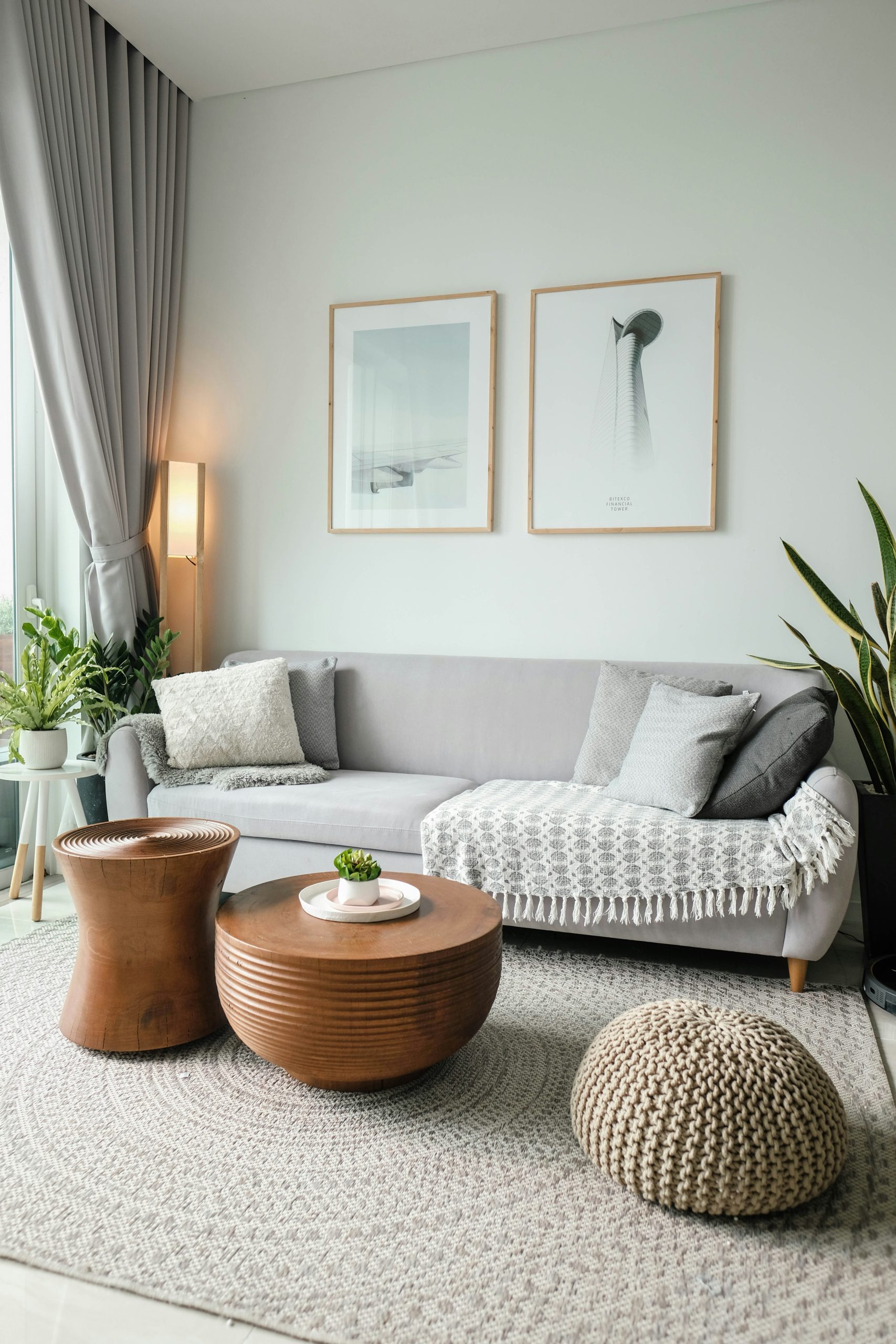
2). Modern, outdoor living areas
Ever since the COVID pandemic and subsequent lockdowns, expanding living spaces to the outdoors has gained in popularity. Features like plant-filled front porches, outdoor kitchens, fire pits, and cosy seating areas create inviting spaces for relaxation and entertainment for all family members.
“There has definitely been a greater appreciation for outdoor living spaces since COVID,” said Ms Wilson. “Outdoor fabrics and mechanisms for shading have greatly improved in recent years allowing people to fully embrace seamless indoor/outdoor living.”
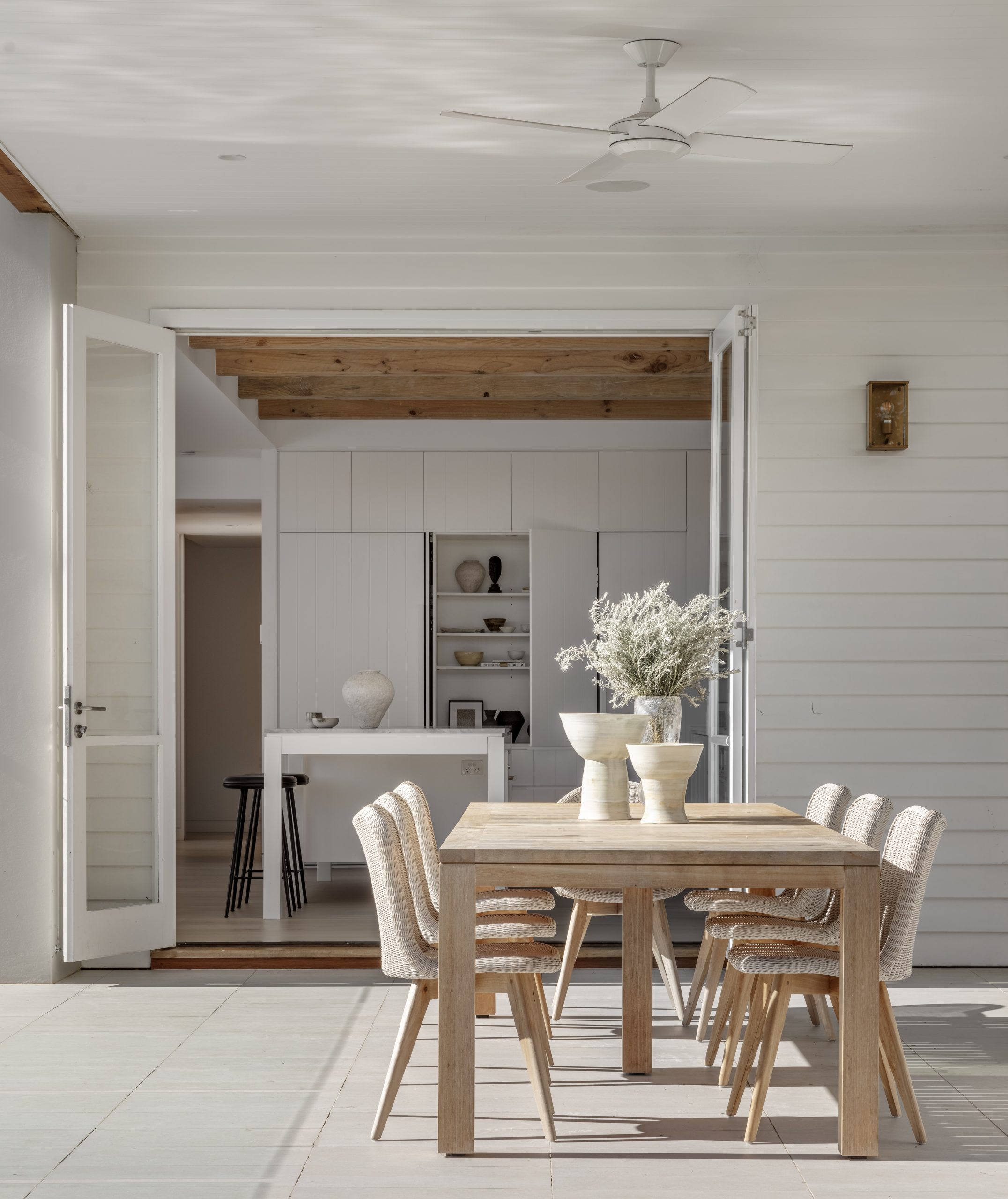
3). The integration of smart technology
Integrating smart home technology throughout your home continues to gain traction with homeowners. As we increasingly look to rely on technology to make our lives all the more seamless, smart technology throughout allows homeowners to control a variety of tasks and zones remotely, enhancing convenience, security, and even energy efficiency. This can include controlled heating and cooling from your phone, automatic lightning, voice control commands, and more.
“The technology for seamless appliances has come a long way. At Salone del Mobile Milano this year, we experienced the new Gaggenau fully integrated induction bench top, which in terms of kitchen design, is a huge advancement,” said Ms Wilson.
Gaggenau, the German manufacturer of high-end home appliances, is at the forefront of smart home technology, paving the way for intelligent cooking appliances that learn and adapt to user preferences. Gaggenau’s essential induction cooktop, the functional and seamless cooking surface Ms Wilson speaks of (pictured below), is designed to be “seamlessly integrated into a kitchen’s worktop”.
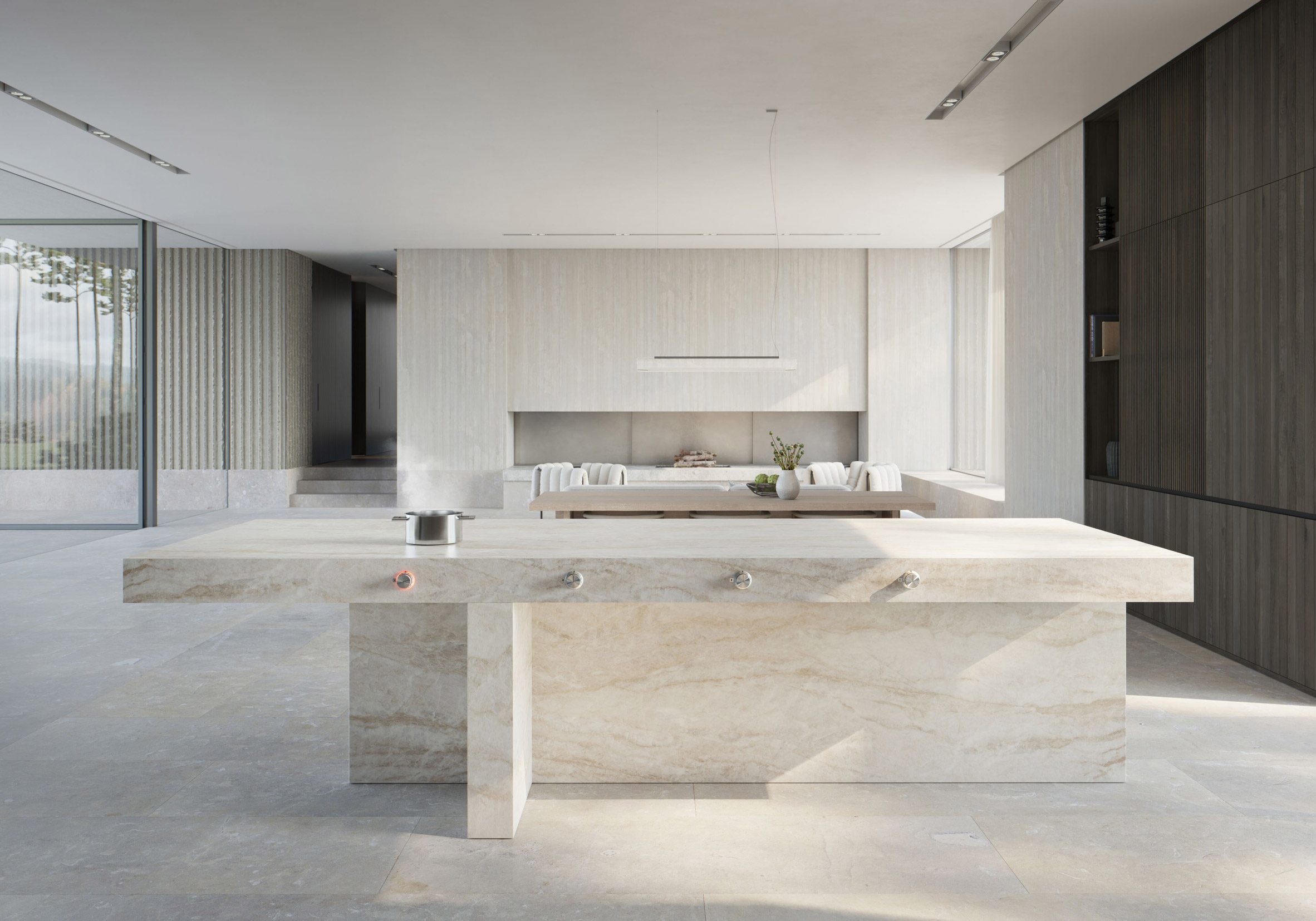
4). Health and wellness features
Prioritising health and wellness in 2024 is paramount, and home design that can include features like air purification systems, dedicated exercise spaces, recovering hubs—like saunas and ice baths—and relaxation areas to support physical and mental wellbeing will go a long way in not only adding value to your home, but providing a space that is architecturally on-trend and with the times.
“I’m seeing a lot of demand for in-built saunas, both traditional and infrared, particularly in the homes of our US clients,” said Ms Wilson.
“Bathroom suppliers such as Kohler, Duravit and Toto are offering increasingly sophisticated products that incorporate an almost spa-like experience in your at home bathroom. Examples of this are fantastic multi-nozzle showers and steam showers, Japanese toilets incorporating bidet technology, and elegant and serene bathroom furniture that can be fully customised for clients.”
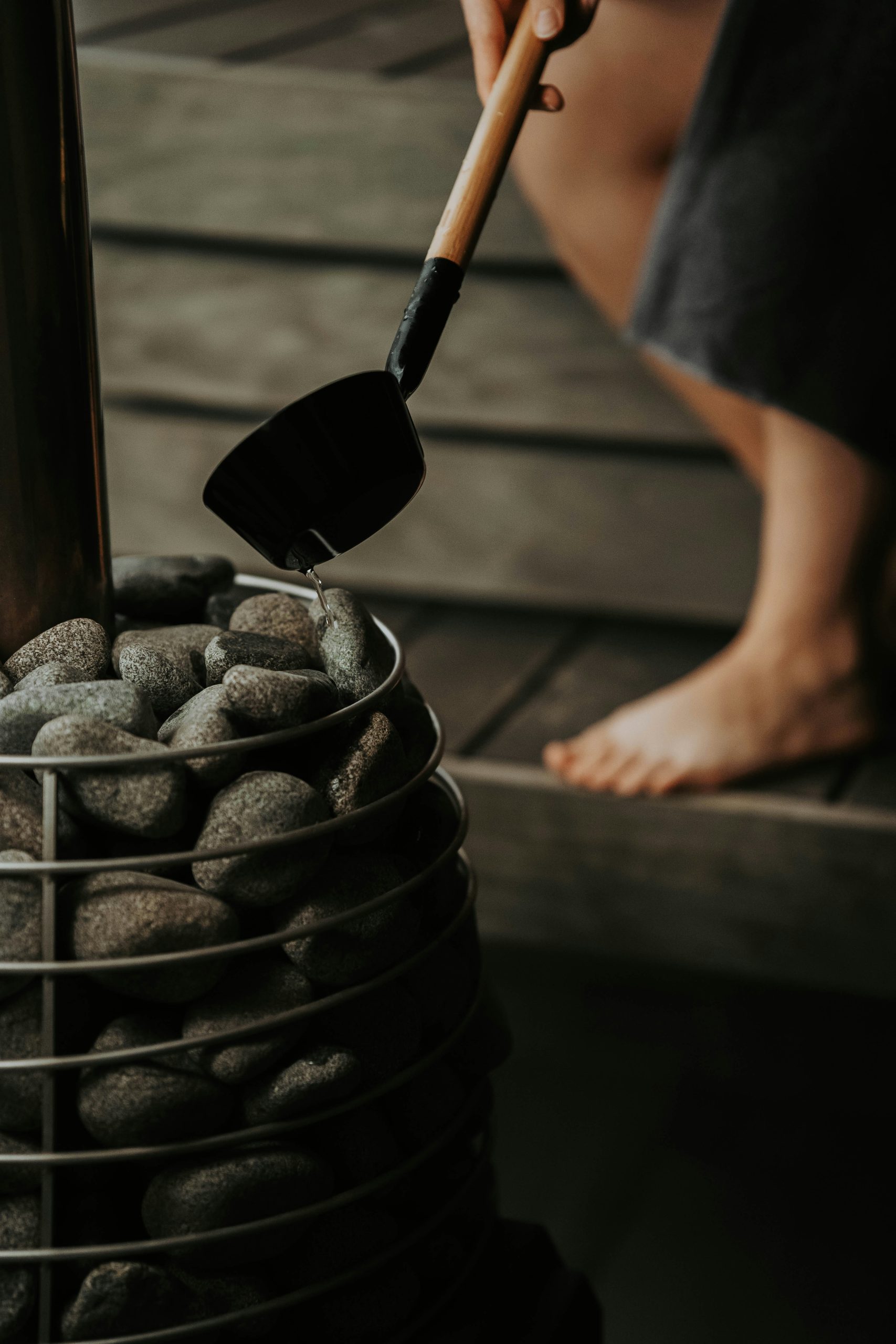
5). Sustainability is key
A common goal among homeowners and future buyers alike is to own a property that is flexible enough grow with them. Futureproofing your home with sustainable measures will not only ensure its longevity, but it will help homeowners to play their part in addressing their carbon footprint.
“The current cost of living crisis is leading to a lot more multigenerational living, meaning families are prioritising durable materials and sustainable power sources, like solar,” said Ms Wilson.
Consider adding solar panels to your home, utilising sustainable materials in any upcoming renovations or builds, like recycled timber, and utilising energy-efficient lighting throughout your home.
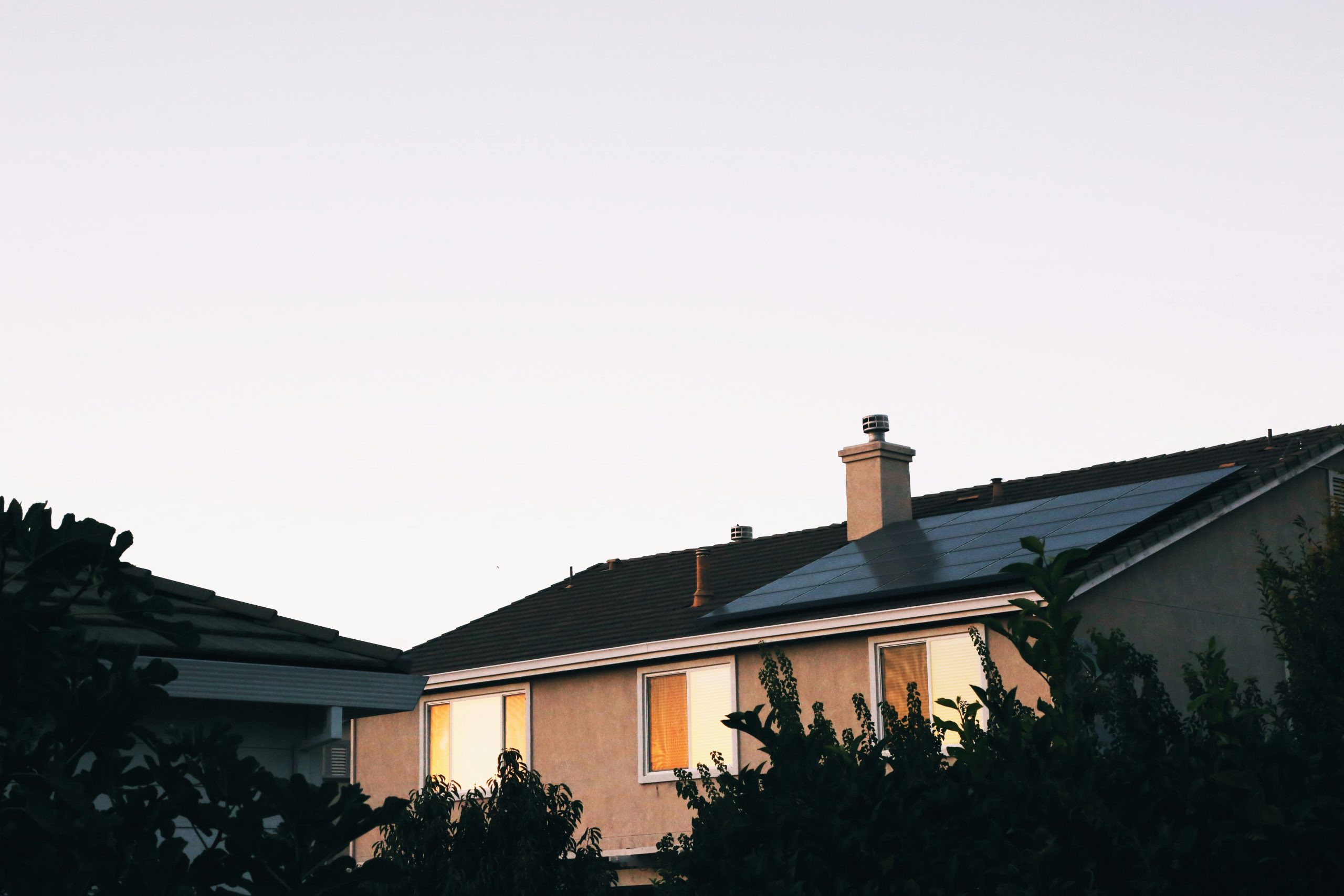
6). Minimalist design
Do as the Scandinavians do – introduce minimalist design into your home. Embrace simplicity and clean lines with a focus on interior design. Decluttering in main living spaces is surprisingly effective. Adopting the approach of ‘Swedish Death Cleaning’, which essentially involves slowly ridding your house of unwanted or unused items once you reach the other side of 50, will also help you whittle your possessions down to the beautiful and the necessary.
Minimalist design in home appliances is also making a resurgence in 2024 according to Ms Wilson.
“What I’ve been interested to see at Salone del Mobile Milano in 2024 is a huge return to stainless steel finishes, and more and more seamless integration of appliances,” said Ms Wilson.
“We’re seeing timeless materials in reimagined applications: copper baths and stainless steel basins are emerging trends with the potential to be timeless. These materials are so practical, and pair beautifully with natural stone and timbers.”
Above all, maximising different spaces through efficient and effective storage options will also do wonders in achieving that minimal aesthetic.
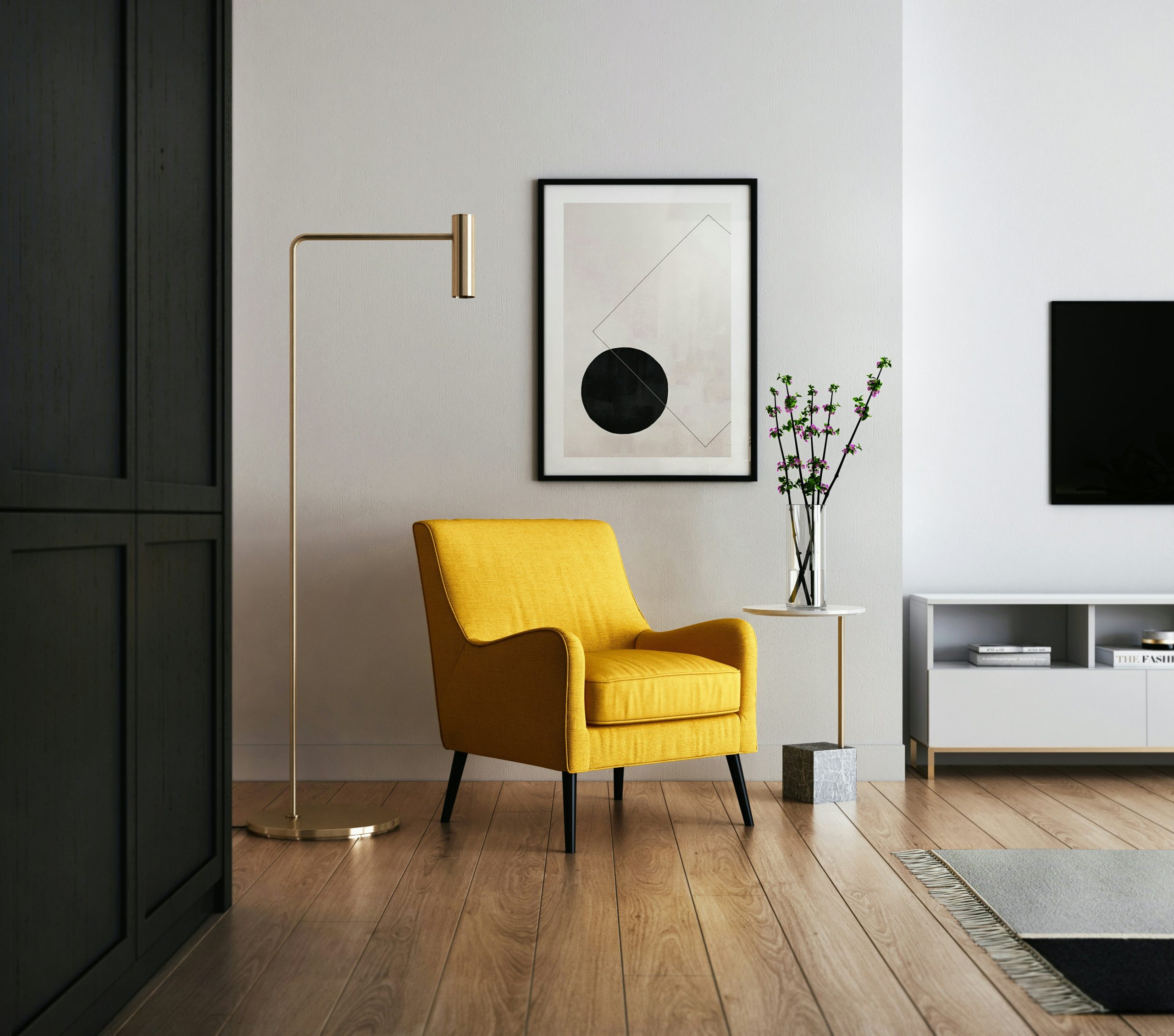
7). Multifunctional spaces
As we move towards greater efficiency of space, it’s useful to consider multifunctional spaces throughout your home. In 2024, we are seeing more homes incorporate multifunctional spaces and trends. This includes using multifunctional furniture in main bedrooms or living spaces—furniture that can act as storage ottomans or convertible sofa beds—as well as transforming wasted space, and open up indoor to outdoor living.
“Multifunctional spaces in homes are a great idea. Particularly in small homes, it makes a lot of sense to achieve maximum value out of the limited space available. The way you use a space can change as your family evolves over time, so it’s always good to design in such a way that allows for flexibility,” said Ms Wilson.
“Make sure that the functions you allocate to a single room are compatible with the space available and each other. For example, it works really well to combine a living room, a dining room and a kitchen in one open plan space because these are all public, lively spaces. It doesn’t work very well to combine, say a study, with these spaces because you will want control over the visual and acoustic privacy in a study.”

8). Think about biophilic design
A buzz word among architects and interior designers, biophilic design is one of the strongest trends in 2024 thanks to its benefits in garnering a sense of harmony and connection between your home and the environment. Consider incorporating natural elements into home design, such as large windows to maximise natural light, indoor gardens, and natural materials like wood and stone.
“Biophilic design is a timeless principle, in that home design should connect people in a positive way with their natural environment by maximising access to, and the ability to control, natural light and ventilation, which really helps to create an enjoyable (and healthier) environment to live in,” said Ms Wilson.
“Increasingly, there is a demand for this positive relationship to the natural environment; by leaning on the principles of biophilic design, you can create a haven and retreat at home that can help with the daily stresses of life.”
Ways to foster that indoor-outdoor connection can be through the addition of smaller internal courtyard spaces filled with greenery, or incorporating indoor plants and adding greenery into different rooms throughout your home.
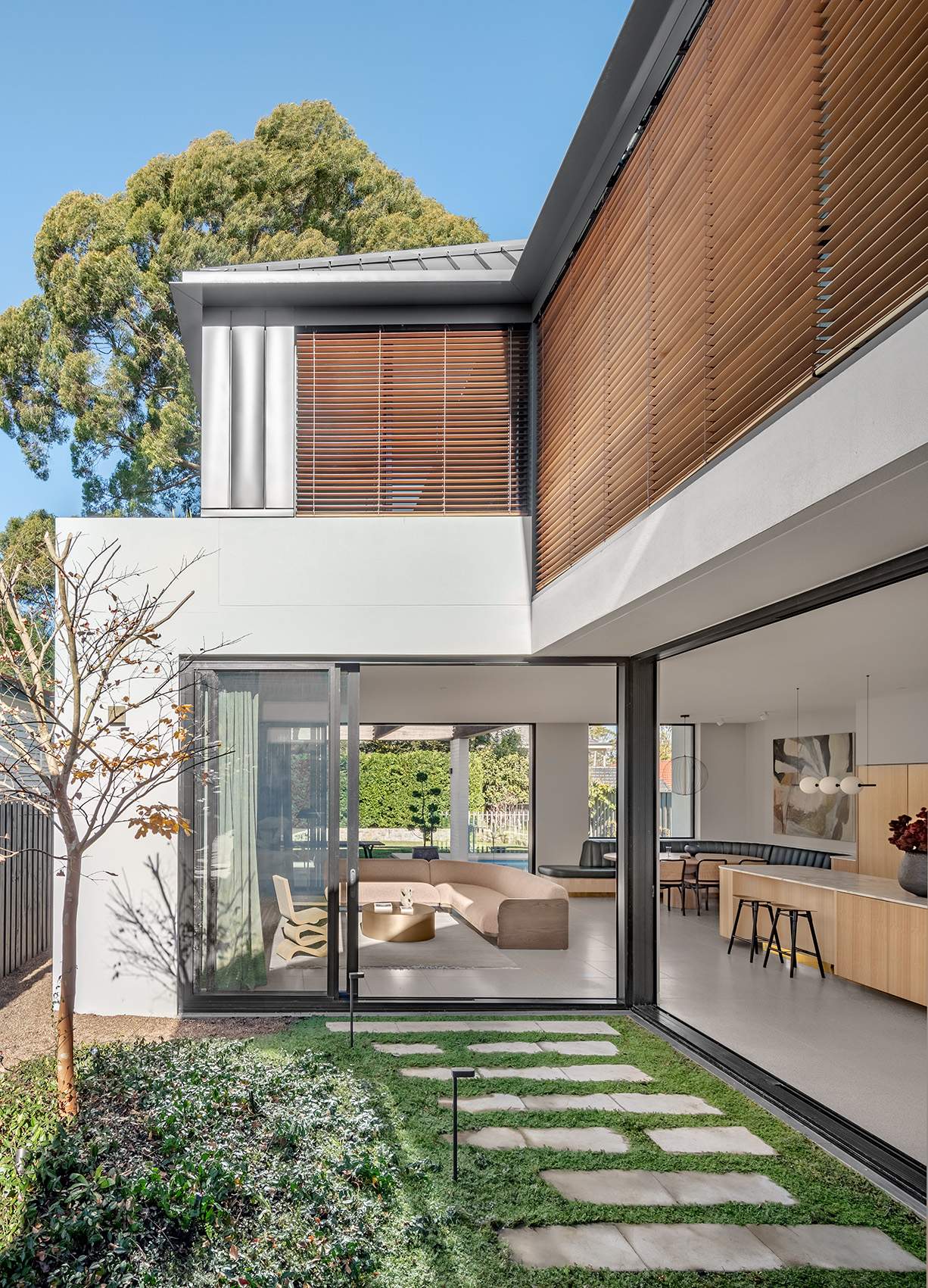
—
This stylish family home combines a classic palette and finishes with a flexible floorplan
Consumers are going to gravitate toward applications powered by the buzzy new technology, analyst Michael Wolf predicts









